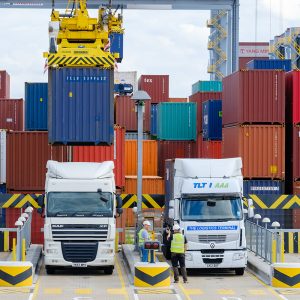The obligation to verify the gross weight of containers or VGM
What do we mean by VGM in maritime transport?
VGM is the acronym for “Verified Gross Mass” and refers to the total weight of a cargo container including the cargo and all stowage and securing equipment used to secure the cargo in the container. Weight measurement is crucial for cargo transportation as the total weight of the container influences the safety and stability of the cargo during transportation and logistics planning. VGM became a mandatory requirement globally in July 2016 as amended by the International Convention for the Safety of Life at Sea (SOLAS).
The obligation to verify the VGM or gross weight of the containers
The International Maritime Organization (IMO), following the accidents due to structural failure of the ships MSC Napoli (in 2007) and MOL Confort (in 2013), by Resolution MSC.380 (94) amended in 2014 Regulation 2 on cargo information, of Chapter VI on carriage of liquid cargoes and bunkers, of the International Convention for the Safety of Life at Sea or SOLAS Convention. Thus, in 2017, the legally binding requirement to perform the verification of the gross weight of the container as a condition for loading on the ship came into force.
As of this date, any shipper entity (natural or legal person named in the bill of lading as shipper or the person who has concluded, or in whose name or on whose behalf or for whose account a contract of carriage of goods has been concluded with a shipping company) is under the obligation to verify the gross weight of full containers. The shipper must also ensure that the verified gross weight is recorded on the shipping document and that the verified gross weight is submitted to the ship’s master or his representative and to the terminal representative in sufficient time, as required by the master or his representative, to enable this information to be used in drawing up the stowage plan.
Practical effects
If a container is delivered at the marine terminal without the verified gross mass (VGM ) being provided by the shipper , the master or his representative and the terminal representative may obtain the VGM of the full container on behalf of the shipping company. For this purpose, the full container may be weighed at the terminal or elsewhere.
When the activity of verifying the gross weight of a container is carried out within the service area of a port, such activity may be in the nature of a commercial service.
When is VGM verification mandatory?
Verification of the gross weight of full containers will apply to all containers covered by the International Convention for Safe Containers(CSC ), 1972, and which are to be stowed on board a ship subject to SOLAS Chapter VI on Carriage of Cargoes and Bunker Oil. The IMO Maritime Safety Committee (MSC) resolution states that containers carried on a chassis or on a trailer are exempted when such containers are carried to or from a ro-ro vessel engaged on short international voyages, as defined in SOLAS Chapter III, Regulation 3.
VGM verification methods
- Method 1: weigh the full container after packing and sealing of the container has been completed; or
- Method 2: weigh all packages and cargo items, including the weight of pallets, dunnage and other securing material loaded in the container and adding the tare weight of the container to the sum of each mass.
The scale, weighbridge, lifting equipment and other devices used to verify the gross weight of the container shall be calibrated by a laboratory accredited by the entity designated by the Administration of the country where the verification of the gross weight takes place or, otherwise, by another entity recognized within the scope of mutual recognition agreements between national accrediting bodies.
Discrepancies between declared and verified gross weights
According to IMO guidelines, when there are discrepancies between the gross weight of a full container declared before its gross weight was verified and its verified gross weight, the data obtained from the verified gross weight will prevail.
The discrepancy should be resolved by making use of the verified gross weight obtained by the port terminal facility. The discrepancy exists, as stated in some regulations when:
- The difference in gross weight obtained in two different weighing processes is 500 kg, plus or minus, for containers loaded with up to 15 t.
- The difference in gross weight obtained in two different weighing processes is more or less than 5% for containers over 15 tons.
Jaime Rodrigo de Larrucea holds a PhD in Law and Nautical Engineering, and is a professor of Maritime Law and Maritime Safety at the Polytechnic University of Catalonia.
His publications include:
- Container Transport
- Maritime Safety. General risk theory
- Safety research. From the Titanic to resilience engineering.
- Containerized transport handbook
Additional Resources
Image: DP World London Gateway Port ©nickstrugnell







